Exploring the Alliance for Innovation’s new cooperative contracts

The Alliance for Innovation’s (AFI) new cooperative contracts aim to boost local government efficiency. Interim director Clay Pearson explains their purpose and potential impact.
Q: You were recently brought in as AFI’s interim director, but you’ve been involved with the Alliance for much of your career. In your view, what makes it unique among local government networks?
Clay: The AFI appeals to pros in local governments that want to do things better. The Alliance has been working with local governments for over 40 years, providing strategic foresight and innovation services for local governments to make positive change in their communities. Whether that's innovating with technology, or making day to day processes more impactful. Throughout my career, the AFI network always shared useful lessons from people that I looked up to, people I wanted to learn from; and provided insights that I could bring to my home community.
Q: One of the strengths of the Alliance is its convening power. Its events bring together local government professionals from across the country. Can you tell us more about these gatherings?
Clay: The marquee event for the Alliance is the annual Transforming Local Government Conference, and in April 26’ we’ll be in Dallas. The event is not led by professional speakers or vendors – though they partner with us and are an important piece of it. TLG presenters are a collection of presentations from people from local government agencies sharing what they are actually doing to drive positive change across a variety of situations.
When the people actually doing the work share their experiences, it's unvarnished. It's the good and the bad. They're not being paid to advertise for a product. They share the highs and lows, how they got into situations where there was an opportunity to innovate, where they stumbled and what they learned. That’s much more inspirational and really makes you think about what lessons you want to bring back to your community.
Q: There has been a lot of excitement recently around AFI’s cooperative purchasing offering. Civic Marketplace has six of these contracts already available on the platform – why is this initiative so important for local governments?
Clay: In local government, being efficient with public resources is paramount. Frankly, early in my career I thought of procurement as a back office internal service. But over the years I’ve really come to believe that it can be a more strategic part of overall financial stewardship. A key piece of that is cooperative purchasing.
Cooperative purchasing broadens the scope, and reduces the friction and administrative costs of procurement. A prime example is our Batteries Plus contract which entities can use to achieve average savings of 30% against general market list prices for batteries, power and lighting. It allows ongoing access to these products, rather than just buying them on the fly when you need something and paying retail prices.
The USA localized government model can be very responsive and entities can explore and pursue projects at liberty. The downside is that often we don't have the size to benefit from economies of scale – a lot of places can’t spare resources dedicated to optimizing procurement.
So cooperative contracts are very important and useful for giving access, speed, and great pricing, which fits with the AFI mission of enabling effectiveness and efficiency across local government organizations for the betterment of the whole community.
Q: You mentioned economies of scale. How does AFI’s cooperative purchasing model achieve that, and how are vendors selected to work with local governments?
Clay: Many of our procurement initiatives start with local governments themselves. When several members need the same products or struggle to find vendors, AFI steps in to issue a joint RFP. That collective demand creates real economies of scale, more buying power, and better pricing for everyone involved.
We’re also committed to full transparency. Every contract shows how the procurement was done, who submitted proposals, and what the pricing structure looks like. It’s information that’s often hard to find elsewhere, and we want members to access it easily. That commitment will only strengthen as the program grows.
Q: What’s your vision for how AFI’s cooperative programs will evolve over the next few years and the impact they will create?
Clay: We’ll continue to help local governments navigate an uncertain future. Everybody is talking about AI now, and we’re supporting towns and cities by enabling access to these rapidly developing technologies through transparent and future-proofed procurement processes. Together with Civic Marketplace and the North Central Texas Council of Governments, we’ve launched comprehensive AI consultancy and AI solutions contracts built specifically for local governments, competitively awarded to pre-vetted suppliers.
Over the next few years we’re also keen to drive local economic development. Many of the vendors we work with face the same challenges as local governments when navigating procurement: the paperwork, the documentation, the complexity of selling to public entities. Cooperative contracts help level that playing field. They help smaller vendors reach multiple governments across their region through a single RFP process, opening doors to significant business opportunities.
Take the Batteries Plus contract, for example. With more than 700 Batteries Plus franchise stores nationwide, spend under this contract supports local jobs and local tax revenue — proving procurement can be a tool for economic development. When local government budgets are funded by local taxpayers, it makes sense to keep that value circulating in the same communities.
Q: You’ve talked about using procurement as a lever for strategic change. What does that look like in practice for local governments?
Clay: That’s what gets me jazzed up about this.
As a city manager I took a lot of examples from the private sector where procurement often sits at the heart of financial strategy — usually under the CFO — driving long-term planning and cash flow decisions. In local government, that sort of longer range planning, at least historically in my experience, is largely absent in procurement.
But how do you fix that with limited resources? One of AFI’s goals is to help local governments think more strategically about their spending — planning purchases over one to three years and exploring smarter, more coordinated ways to buy. It’s about shifting procurement from a routine task to a tool for better outcomes.
Learn more about the Alliance for Innovation and join the Civic Marketplace platform to start using these cooperative contracts today.

About Clay Pearson
A seasoned city manager with more than 30 years in local government, Clay’s career includes impactful roles in Fort Worth and Pearland, Texas; Novi, Michigan; and Elgin, Illinois, contributing to his expertise in community and economic development, budget and finance, public safety, and technology. His tenure in diverse states and situations, working with cities ranging from 60,000 to one million, has equipped him with experience, perspective and a unique ability to collaborate with elected officials and assist community leaders in transforming their visions into actionable plans.


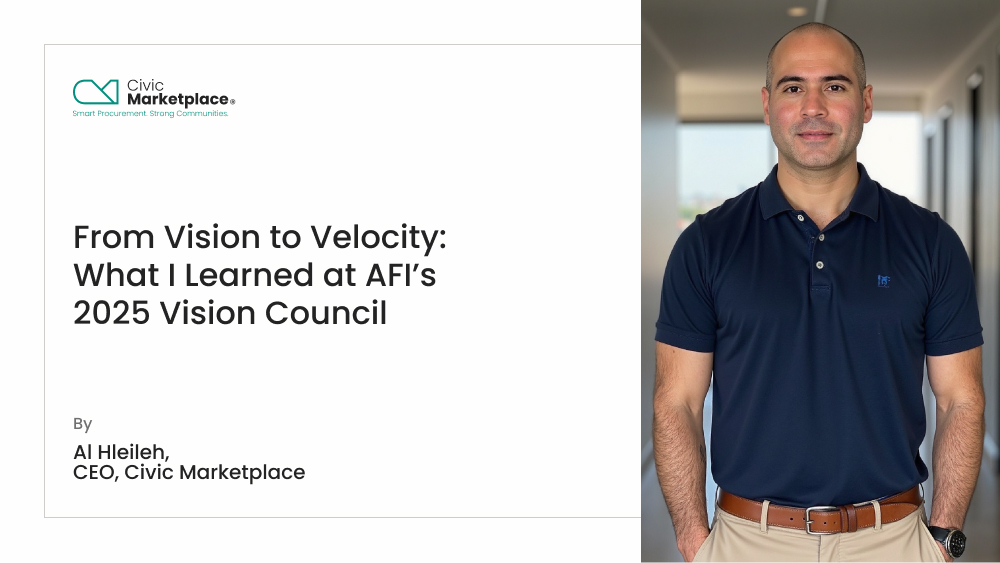
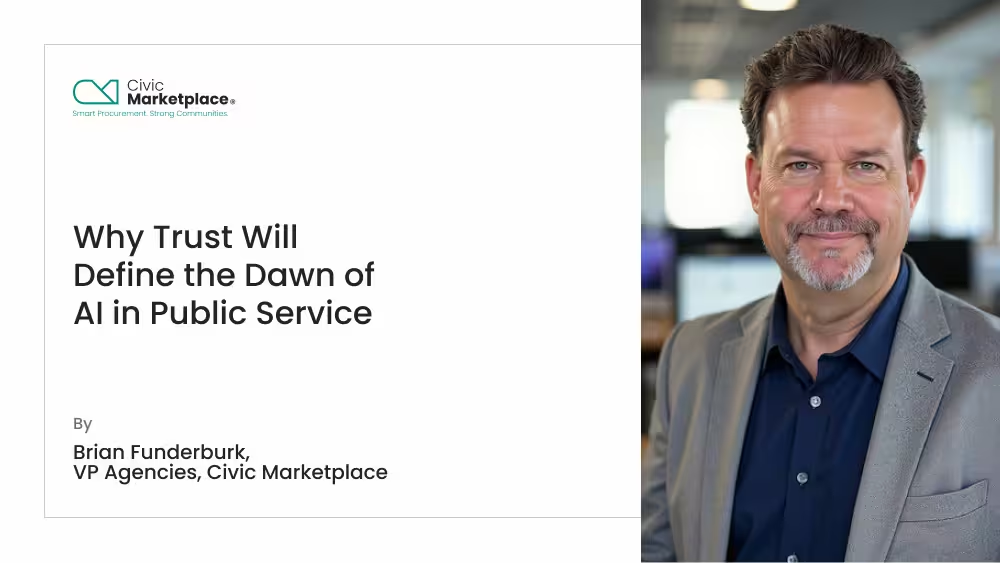
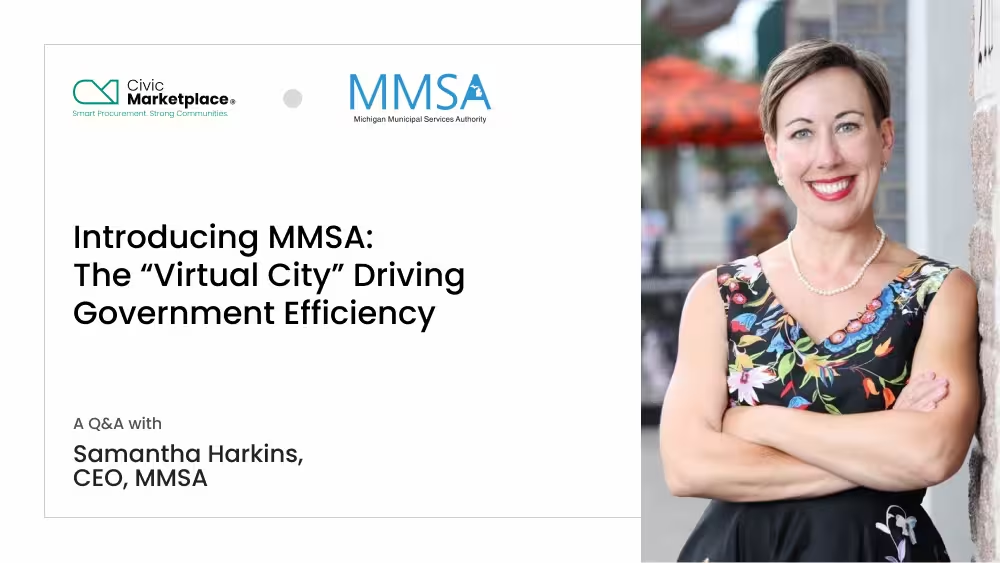
.avif)
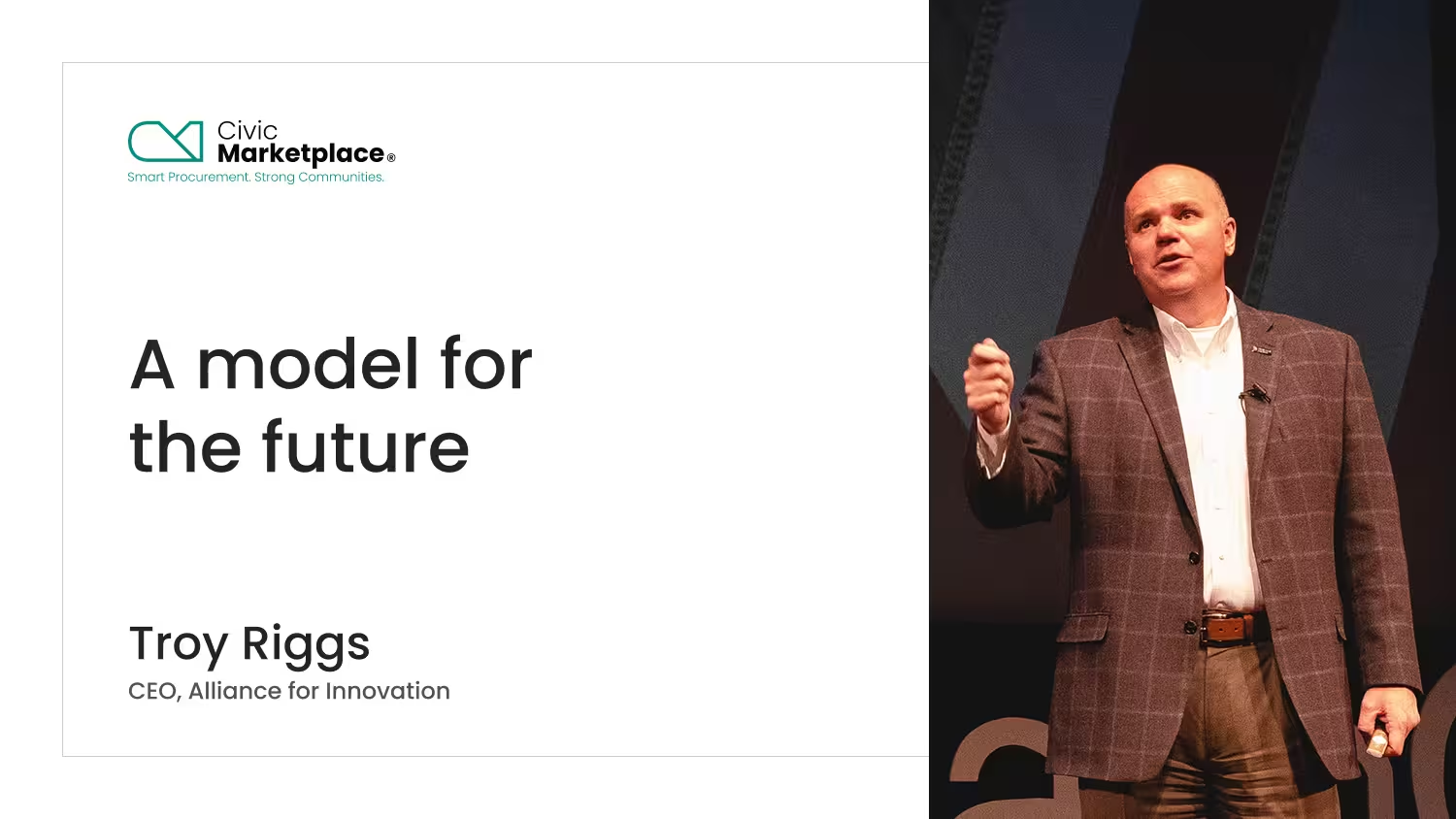
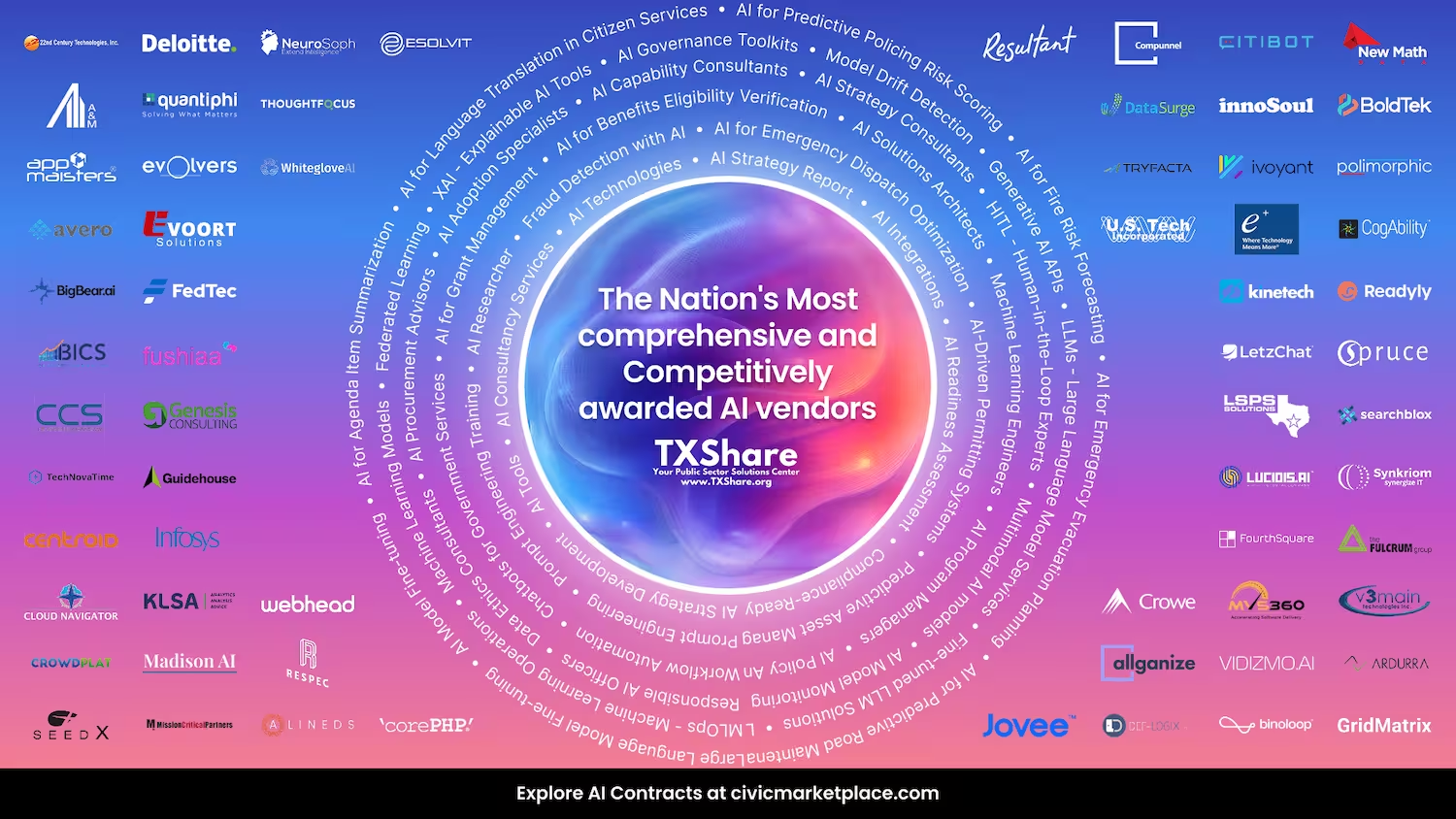
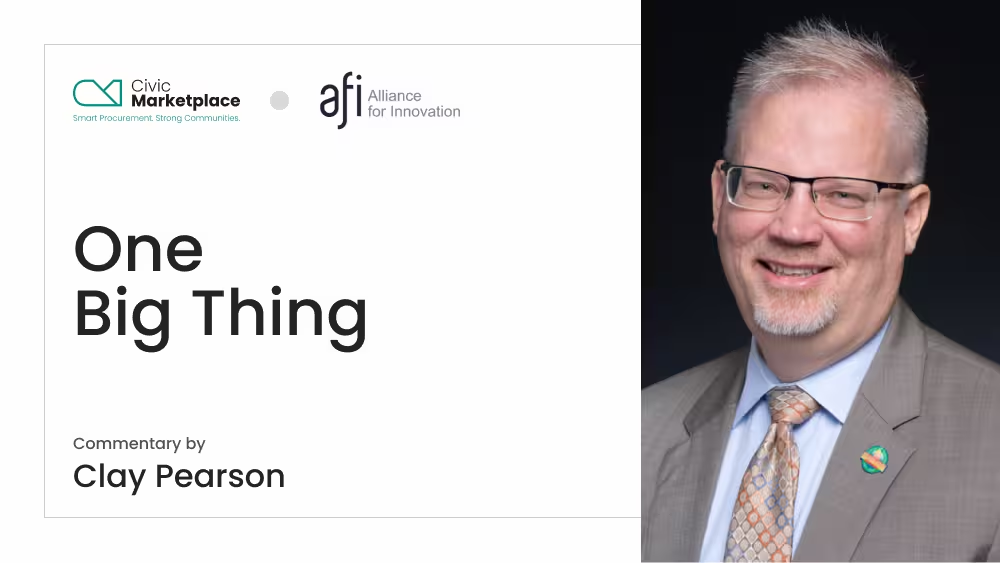
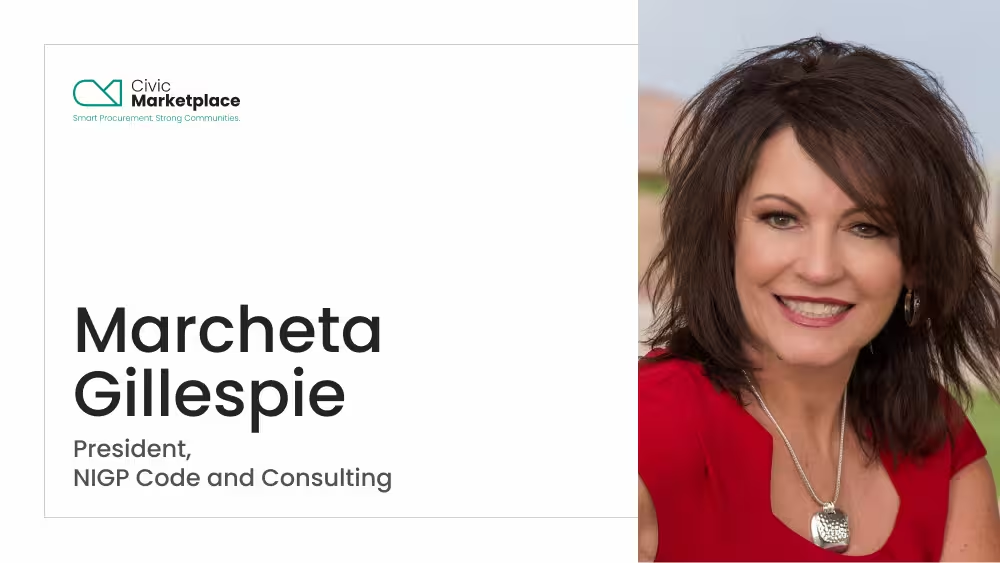
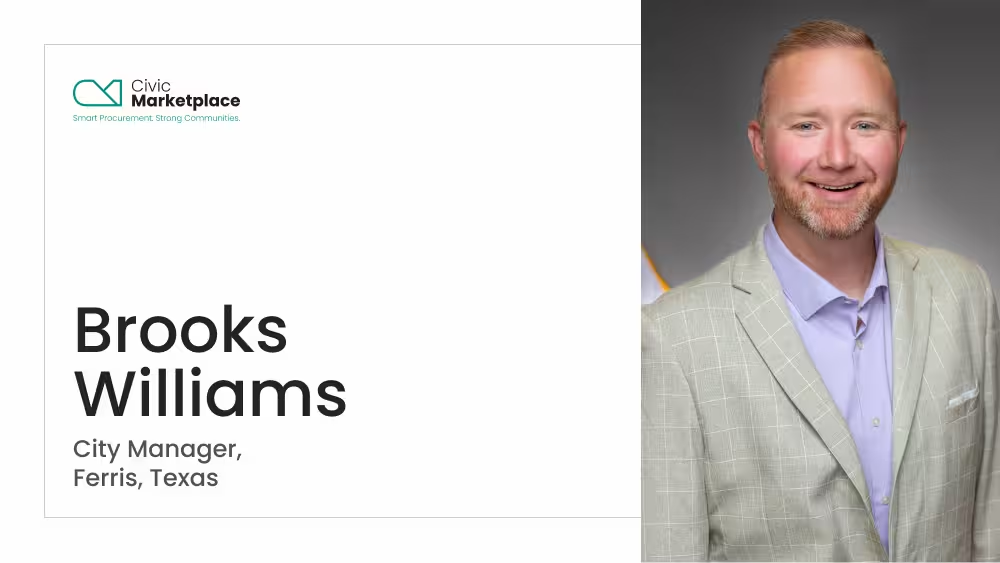
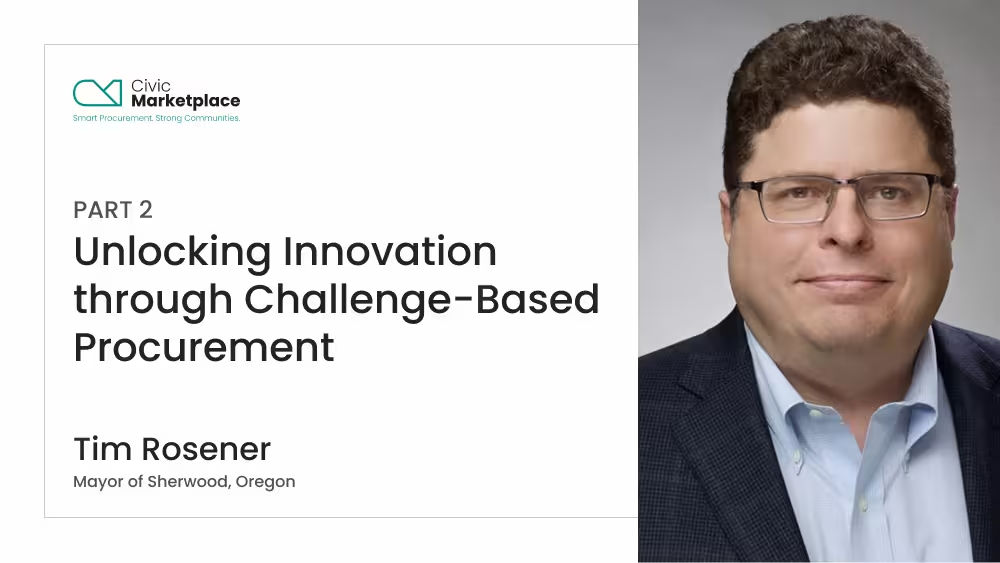
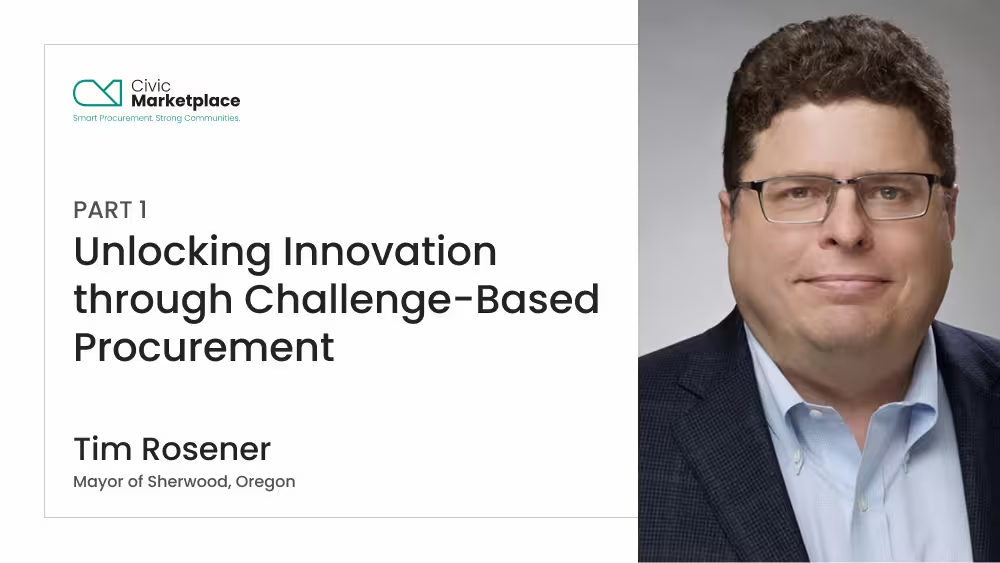

.avif)